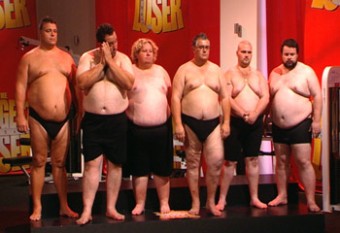Is makeover culture indicative of the self-managing and self-produced individual in consumer society?
The question of makeover culture being indicative of the self-managing and self-produced individual in consumer society can be seen as too simple in premise to answer. Regardless, if one were to answer yes or no, the answer would be no. However, it is not that simple. This essay will discuss the makeover and its culture within a consumer society in contrast to its effects on the individual. From this, the question of whether or not agency reigns over structure is one open for debate. Simone de Beauvoir once wrote that ‘one is not born, but rather becomes, a woman’ (de Beauvoir S, 1988 p. 267). Her comment not only speaks about a self-produced identity but also about structural influences as a simultaneous cause. This essay will attempt to discuss this topic with an emphasis on dualism. That is to say that one can argue in favour of free agency within any given structure, and yet, simultaneously, argue that our choices in society are limited to normalised views and class positioning. Heyes suggests that ‘taking charge of one’s destiny […] or gaining the body that better represents the moral virtues one has developed, are all forms of working on the self within a regime of normalisation’ (Heyes CJ, 2007 p. 28). This is a valid suggestion to make considering that, as this essay will argue, structure and agency are both interchangeable within a post-modern world; each acts off the other.
The term makeover was first used in an issue of New York’s Vanity Fair in 1860. It was utilised to reference a character named ‘Miss Angelica Makeover’ who, unsurprisingly, had the uncanny super ability of being able to beautify her hair with ‘miracles of art and patience’. In actual fact, the copy was ‘the men like her and the women wonder why’ (Miller T, 2006 p. 586). Of course, this was widely known as a satirical piece, playing on the notion that in order to be aesthetically beautiful, one must maintain a sense of wonder to be attractive within the boundaries of a heteronormative structure. Sadly, in 153 years, this notion of femininity is still a reality. The definition used to describe makeover today ‘has [proven] to be a device that is useful for the portrayal of almost any social practice, from hotel ownership to debt management and toddler taming’ (Redden G, 2008 p. 485). This includes the ethically debatable practice of cosmetic surgery. However, within this practice, ‘ideological complexes’ can be found (Jones M, 2008, p. 15). There are a number of contradictory discourses within makeover culture, both serving to strengthen and weaken an individual’s motivation for internal and external change; one of these being the conflict of oppression over liberation. That is oppression in regards to structure and liberation in regards to individualistic freedom.
For example, from one feminist perspective, ‘cosmetic surgery enables women to move beyond a body reduced to the function of reproduction’ and allows them to embody a self with the capability of being able to stage new identities (Brooks A, 2004 p. 209), thus liberating their self within a patriarchal society. This view allows the individual to take control of their identity, and yet, the question of whether or not these choices are due to the normalising gaze remains, that being the question of whether or not individuals self-regulate because of societal expectations. It could be argued that, for many, ‘choosing cosmetic surgery is not about trying to be beautiful but rather about becoming “normal”’ (Jones M, 2008 p. 21). The word normal itself refers to socially constructed ideals, thus bringing forth the theory that free will is a myth or, at the very least, is only limited to the boundaries erected by society and its occupants. To support this argument, Jones argues that ‘cosmetic surgery processes the bodies of women, who make up the vast majority of its pool, into man-made women’ (Wolf N cited in Jones M, 2008 p. 21). This begs us to ask the questions: who is it that makes the choice to undergo cosmetic reconstruction? Is it the participant or is it discourse within a patriarchal society?
One could postulate that the male gaze is an important contributor to these norms. That is the theoretical belief that perspectives in the media and other forms of discourse have been framed through that of men (Jones M, 2008, p. 21). Taking this into account, if one suggestion assumes that ‘all citizens are similarly positioned as agents of their own welfare, another is that it includes very little recognition that […] optimization is mediated through discourse’ (Redden G, 2008 p. 486) For evidence of the latter, you need only turn on a television to witness its effects. Take the Jerry Springer Show for example:
‘An obese woman appeared on stage wearing a micro-mini frock and high heels. Her waiting family members shook their heads in disgust and the audience booed and jeered. But then Springer said she had recently lost 100 pounds. Instantly boos (sic) changed to cheers and the woman sat down proudly, ready to defend her right to wear skimpy outfits.’ (Jones M, 2008 p. 11).
Here, the disapproving audience falls prey to the influences of societal norms, reinforced by the media and images of beauty associated within it. As a result of Jerry’s announcement, the audience applauds her effort to change and moves aside her physical appearance. This leads to the conclusion that transition is prized above all else, thus deducing that if the knowledge of transition was removed, they’d still be ‘booing and jeering’, based on their socially constructed views of beauty.
Jones claims that ‘makeover culture is a state [in which] becoming is more desirable than being’ (2008 p. 12). To further this notion, the makeover can also be perceived and described as a ‘fairy tale of identity becoming’ (Heyes CJ, 2007 p. 21). Pick up any children’s book from the library and it is plain to see that the fairy tale narrative provides ‘metaphorical accounts of identity transition’ in which natural life occurrences such as adolescence or socio-economic determinants appear to be erased. ‘The motif and they all lived happily ever after describes a mature [and] flawless self’ after battling through the hardships of transition (Heyes CJ, 2007 p. 21). This is an appealing conclusion to years of supposed abnormality, and this is why makeover culture is so widely accepted and embraced as a means to self-produce and manage our identities. However, the question of why this transition has become so important to the individual is one worth looking into. The need for individual change has become increasingly popular within the confines of post-modernity (Elliott A, 2010). As Bauman observes, the modern self is obsessed with stability and predictability, and yet the post-modern self is just the opposite as it lacks solidity and structure (Elliot A, 2012, p. 154). A direct cause of this could be due to the effects of living within the culture of ‘quick-change’ (Jerslev A, 2006, p. 133). With thanks to the expanse of globalisation, bodily transformation seems to be the norm due to its ease of access and the promise of pain free transition. However, again, change is limited to what is seen as normal within westernised post-modernity.
In support of Bauman’s claim, Atkinson argues that in a post-modern society ‘the symbolic fracturing of family, economic, political, educational, sport-leisure, technological-scientific and media power bases, masculinity codes have been challenged within most social settings’ (Atkinson M, 2008 p. 68). As outlined in Atkinson’s study,
‘Tom’s cosmetic surgery narrative is a typical one: he tells the story about cosmetic surgery as a pathway toward body enhancement, as a vehicle for fitting in and as a technique for building self-esteem. As part of his narrative, Tom expresses a clear understanding of his own interest in body enhancement; he simply wants to be present, recognized and very ‘commonly’ male’ (Atkinson M, 2008 p. 75)
Here, Tom’s motive for displaying an act of agency is influenced by the structural expectations of “common” society itself. From this, we can conclude that within structure, agency can be found, and therefore, both agency and structure are contributing factors in creating the self-produced individual. Lewis claims that ‘people’s sense of selfhood today […] is increasingly disconnected from fixed categories of social identity’ (2008 p. 68). This is evidently apparent but does not necessarily make it determined. People’s sense of selfhood might be perceived as being disconnected from the social structure but that is not to say that there isn’t a type of dualism at play here. Not just within agency and structure, but also between the internal and external self.
From a philosophical perspective, ‘many thinkers from Plato to Rousseau to Hegel have suggested in various ways that the body tells us something about the virtues of the soul with which it is conjoined’ (Heyes CJ, 2007 p. 18). This seems to be a popular discourse communicated via makeover television, stating that the body should be synonymous with a virtuous mind, as if to say that everybody thinks in terms of virtue, thinness, and normalised views of beauty. However, according to Heyes, many ‘feminists, anti-racists, and disability rights activists, for example, have all convincingly argued that bodies marked by sex, race, or physical impairment do not indicate an inferior intellectual ability or moral character’ (2007 p. 18). It could also be argued that according to the expectations of a contemporary society, and despite the supposed arguments against this claim, the physical body should be, as common discourse would have us believe, as pure as the mind. These expectations bring with them the concept of an aesthetically homogenised culture. To support this, Brooks argues that ‘as increasing numbers of women engage in [common forms of cosmetic surgery procedures], beyond looking more “beautiful” or “younger”, they also may begin to look more alike’ (2004, p. 225). This claim gives the inquisitive public no choice but to ask themselves where choice begins and where choice ends. Whether it begins from an individualistic perspective, a structural perspective, or from a place somewhere in between, is a question that begs to be examined.
In brief, free agency to change is evident but only works to serve in accordance to structure within the boundaries put up by society and its functions of normalisation. A number of factors have been mentioned in regards to how these aesthetic norms are enforced, thus the aforementioned nods to media discourse and our individual selves within a post-modern structure. We, as free agents, not only have the ability to change within the confines of class and structure, but our choices are also influenced by the gaze upon us.
References
Atkinson, M 2008, ‘Exploring Male Femininity in the ‘Crisis’: Men and Cosmetic Surgery’, Body & Society, vol.14, no.1, pp.67-87
Brooks, A 2004, ‘Under the Knife and Proud of It: An Analysis of the Normalization of Cosmetic Surgery’, Critical Sociology, vol.30, no.2, pp.207-239
de Beauvoir, S 1988, The Second Sex, London
Elliott, A 2010, ‘Concepts of the Self’, Cambridge
Heyes, CJ 2007, Cosmetic Surgery and the Televisual Makeover, Feminist Media Studies, vol.7, no.1, pp.17-32
Jerslev, A 2006, ‘The Mediated Body: Cosmetic Surgery in Television Drama, Reality Television and Fashion Photography’, Nordicom Review, vol.2, no.27, pp.133-151
Jones, M 2008, Skintight: an anatomy of cosmetic surgery, New York
Lewis, T 2008, ‘He needs to face his fears with these five queers!’ Queer Eye for the Straight Guy, makeover TV, and the lifestyle expert’, Smart Living: lifestyle media and popular expertise, Peter Lang, New York, pp.67-87
Miller, Toby 2008, ‘The new world makeover’, Continuum: Journal of Media and Cultural Studies, vol.22, no.4, pp.585-590
Redden, G 2008, ‘Economy and reflexivity in makeover television’, Continuum: Journal of Media and Cultural Studies, vol.22, no.20, pp. 485-484







